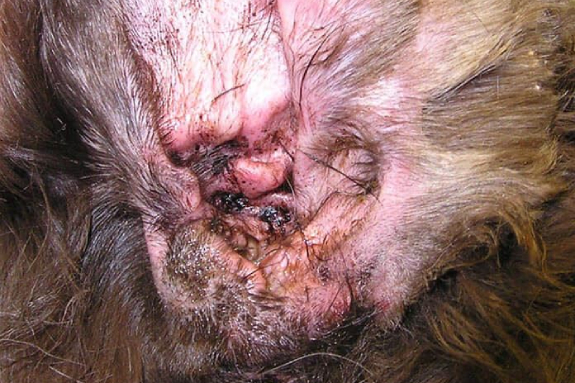Ear Infections in Dogs: 7 Key Signs Every Aussie Pet Owner Should Know

Tags
What do you think?
🐶 Ear Infections in Dogs: 7 Key Signs Every Aussie Pet Owner Should Know
Ear infections in dogs are a common health issue faced by many Aussie pet owners. Recognising the signs early can help prevent discomfort and more serious problems for your furry friend. In this article, we’ll cover the key symptoms to watch out for, causes, treatment options, and prevention tips to keep your dog’s ears healthy.
1. Persistent Scratching or Rubbing of the Ears
If your dog is frequently scratching or rubbing their ears, it could be a sign of an ear infection. This behaviour often indicates itching or discomfort caused by inflammation in the ear canal.
2. Head Shaking or Tilting
Dogs with ear infections may shake or tilt their heads to alleviate discomfort or to try to dislodge debris from the ear canal. This action can also be a response to the pain or pressure caused by the infection.
3. Unpleasant Odour from the Ears
A foul smell emanating from your dog’s ears is a common symptom of an infection. The odour is typically due to the overgrowth of bacteria or yeast within the ear canal.
4. Redness or Swelling Inside the Ear
Inflammation in the ear canal can cause the skin inside the ear to appear red or swollen. This is often accompanied by warmth to the touch and may indicate an active infection.
5. Discharge from the Ear
An abnormal discharge, which can be brown, yellow, or bloody, is a clear indication of an ear infection. The presence of discharge often signifies that the infection has progressed and requires veterinary attention.
6. Sensitivity or Pain When Touching the Ears
If your dog shows signs of pain or discomfort when their ears are touched, it may be due to an infection. This sensitivity can make grooming or ear cleaning challenging.
7. Balance Issues or Hearing Loss
In severe cases, an untreated ear infection can affect your dog’s balance or hearing. Signs such as stumbling, circling, or a noticeable decrease in hearing ability warrant immediate veterinary consultation.
🩺 Causes of Ear Infections in Dogs
Several factors can contribute to ear infections in dogs:
-
Moisture: Excess moisture from swimming or bathing can create an environment conducive to bacterial and yeast growth.
-
Allergies: Environmental or food allergies can lead to inflammation and increased wax production in the ears.
-
Anatomical Structure: Breeds with floppy ears or narrow ear canals are more prone to infections due to reduced airflow.
-
Ear Mites: These parasites can cause intense itching and inflammation, leading to secondary infections.
-
Foreign Bodies: Objects like grass seeds can become lodged in the ear canal, causing irritation and potential infections.
🩹 Treatment Options For Ear Infections In Dogs
If you suspect your dog has an ear infection, it’s crucial to consult a veterinarian promptly. Treatment typically involves:
-
Ear Cleaning: Proper cleaning of the ear canal to remove debris and discharge.
-
Medications: Prescription ear drops or oral medications to address the underlying cause, whether bacterial, fungal, or parasitic.
-
Follow-up Care: Monitoring the dog’s response to treatment and scheduling follow-up appointments as needed.
For chronic or severe cases, additional interventions such as surgery may be considered.
🛡️ Prevention Tips For Ear Infections in Dogs
To reduce the risk of ear infections:
-
Regular Ear Cleaning: Use a veterinarian-approved ear cleaner to keep the ear canal free from debris and excess wax.
-
Dry Ears Thoroughly: After swimming or bathing, ensure your dog’s ears are completely dry.
-
Manage Allergies: Work with your vet to identify and manage any allergies your dog may have.
-
Avoid Over-Cleaning: Excessive cleaning can irritate the ear canal and disrupt the natural balance.
-
Regular Veterinary Check-ups: Routine exams can help detect early signs of ear issues before they become serious.
Learn how to spot and treat ear infections in dogs with 7 key signs every Aussie pet owner should know. Keep your dog’s ears healthy and infection-free.
By staying vigilant and proactive, you can help ensure your dog’s ears remain healthy and free from infections. Always consult with your veterinarian if you notice any signs of an ear infection to provide the best care for your pet.
Understanding Why Early Detection Matters of Ear Infections In Dogs
Detecting ear infections in dogs early is crucial because untreated infections can lead to more serious complications. If left unchecked, infections can spread deeper into the ear canal and even affect your dog’s middle or inner ear, potentially causing long-term damage or hearing loss. Aussie dogs, especially those with floppy ears or a lot of outdoor activity, are particularly vulnerable because moisture and debris can easily get trapped. Early intervention not only relieves your dog’s discomfort but also reduces the need for more intensive treatments down the track.
The Role of Diet and Immune Health of Ear Infections in Dogs
While ear infections are often linked to environmental factors or anatomy, your dog’s diet and immune system also play an important role. A balanced diet rich in essential nutrients supports your dog’s natural defences against infections, including those affecting the ears. Some dogs may have food sensitivities that contribute to recurring ear infections, so it’s worth discussing dietary options with your vet if infections keep coming back. Additionally, maintaining your dog’s overall health through regular exercise, mental stimulation, and routine vet check-ups can strengthen their immune system and reduce the risk of infections.
When to Seek Veterinary Help Immediately
While minor cases of ear irritation might be managed at home, it’s important to know when professional help is necessary. If your dog shows severe symptoms such as constant head shaking, intense pain, swelling that worsens quickly, or if the discharge has a strong foul smell, it’s time to see your vet immediately. Delaying treatment can increase your dog’s discomfort and lead to complications that are harder to resolve. Your vet can perform thorough examinations, sometimes including ear swabs, to identify the exact cause and prescribe the most effective treatment.
Related Articles

5 Ways the Property Market Fails Aussie Dog Owners
5 Ways the Property Market Fails Aussie Dog Owners Owning a dog is one of life’s greatest joys for many Australians — from the wagging

7 Must-Know Facts About Epilepsy in Dogs
7 Essential Facts About Epilepsy in Dogs Every Caring Aussie Pet Owner Should Know Epilepsy in dogs can be a frightening experience for both pets

Melbourne’s Most Dog Friendly Suburbs. Where to Play With Your Pup
Melbourne’s Most Dog Friendly Suburbs: Where to Play With Your Pup Melbourne is a haven for dog lovers, offering a plethora of parks, cafes, and
